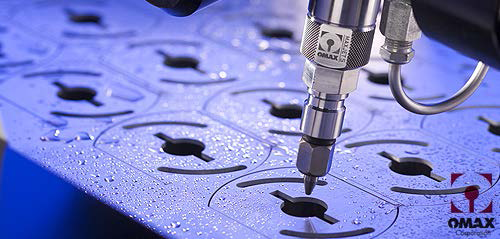Understanding Abrasive Flow Machining
Abrasive flow machining is a finishing process for a variety of materials including tough metals such as titanium. Abrasive flow machining can be utilized in a number of industries including: aerospace, automotive, pharmaceutical, food processing, medical, electronics. Although this operation is ideal for many applications there a different types of abrasive flow machining. Regardless of the type, a hydraulic cylinder pushes an abrasive substance through a channel which is known as the work piece resulting in shaping, deburring and polishing. One major benefit of this process is the ability to control the specific output of the machining by using different grit sizes and types of media. By understanding the advantages and disadvantages of each type of media and abrasive flow machining styles the most cost effective results can be achieved.
Abrasive flow machining is divided into three categories: one way, two way and orbital. Four types of abrasives commonly used include: aluminum oxide, silicon carbide, boron carbide and diamond. Aluminum oxide is a blocky mineral substance which is extremely strong and is an economical substitute for diamond. Aluminum oxide is an ideal abrasive choice if the application does not require the abrasive power of the diamond. Aluminum oxide also has very low heat retention which is preferred for these processes. Silicon carbide is similar to aluminum oxide in regards to durability and low cost. However silicon carbide is a better choice for cutting harder materials due to the superior sharpness of silicon carbide. Both boron carbide and diamonds are among the hardness materials on the planet which make them excellent abrasives for this operation.

Photo Courtesy of AZ Industries, Inc.
Flow rates for abrasive flow machining vary based upon the application and materials. For fragile materials it is recommended to use lower pressure which can be preferred for items that may be negatively influenced by friction heat. Typical medium pressures range from 100 – 3200 psi. Research has shown that pressure, flow rate and cycle rate are key factors to the effectiveness of abrasive flow machining. Flow rates are normally .3 to 378 L/min or 3-100 GPM and can last for several hundred cycles. There are however a few disadvantages with abrasive flow machining such as high capital investment but the advantages clearly outweigh the disadvantages if one is in need of a reliable process for interior surface finishing. Some of the paramount advantages of abrasive flow machining are the fact you can deburr, polish, shape and remove material in one process. This operation is more repeatable than methods such as grinding or other forms of abrasion. Abrasive flow machining also easily allows operators to work in hard to reach areas and the overall process is much faster than other process that attempt to perform the same application.


 Castings & Forgings
Castings & Forgings Bulk Material Handling
Bulk Material Handling Electrical & Electronic Components
Electrical & Electronic Components Flow Instrumentation
Flow Instrumentation Hardware
Hardware Material Handling Equipment
Material Handling Equipment Metal Cutting Services
Metal Cutting Services Metal Forming Services
Metal Forming Services Metal Suppliers
Metal Suppliers Motion Control Products
Motion Control Products Plant & Facility Equipment
Plant & Facility Equipment Plant & Facility Supplies
Plant & Facility Supplies Plastic Molding Processes
Plastic Molding Processes Pumps & Valves
Pumps & Valves Recycling Equipment
Recycling Equipment Rubber Products & Services
Rubber Products & Services